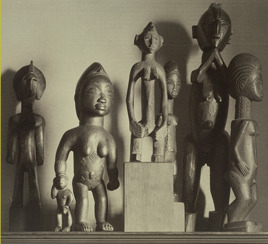“Is Good Limited?”
“Murderme Ltd.”
“Overthesofa Ltd.”
 Got any idea what those titles are? Try the names of companies in Damien Hirst’s business empire. I’m not always a fan of Hirst’s work, but I have to appreciate his sense of humor after reading an article in the January Art Newspaper by Martin Bailey.
Got any idea what those titles are? Try the names of companies in Damien Hirst’s business empire. I’m not always a fan of Hirst’s work, but I have to appreciate his sense of humor after reading an article in the January Art Newspaper by Martin Bailey.
Bailey went through British corporate records and found those among the names claimed by Hirst for his companies. There’s also “Underthesofa Ltd.,” “Resign Ltd.,” “The Goose Wot Laid the Golden Egg Ltd.” and “Victim Ltd.” His main company, Bailey says, is “Science Ltd.”
Explaining the sofa moniker, Hirst apparently told Interview magazine, “I’ve always thought at the end of the day art just goes over the f—ing sofa. You can’t take it too seriously.”
Bailey also cites the Sunday Times Rich List, which estimated Hirst’s wealth at GBP 235 — or $378 million.
Bailey’s article is not (yet?) posted online, but it’s at newsstands.


 6) If deaccessioning is allowed, trustees will regularly leap to it, changing “the board’s perception of its fiduciary responsibility to one more focused on asset management than philanthropy.” Ah, yes — the slippery slope. Here I must question whether the right people are on boards, for the right reasons, and — equally important — the relationship between the director and trustees.
6) If deaccessioning is allowed, trustees will regularly leap to it, changing “the board’s perception of its fiduciary responsibility to one more focused on asset management than philanthropy.” Ah, yes — the slippery slope. Here I must question whether the right people are on boards, for the right reasons, and — equally important — the relationship between the director and trustees.

 collections and sometimes from private collections nearby, I’ve had a sneaking suspicion that there’s a big downside to this as well as an upside.
collections and sometimes from private collections nearby, I’ve had a sneaking suspicion that there’s a big downside to this as well as an upside.  But it has no catalogue — just a color brochure.
But it has no catalogue — just a color brochure. 